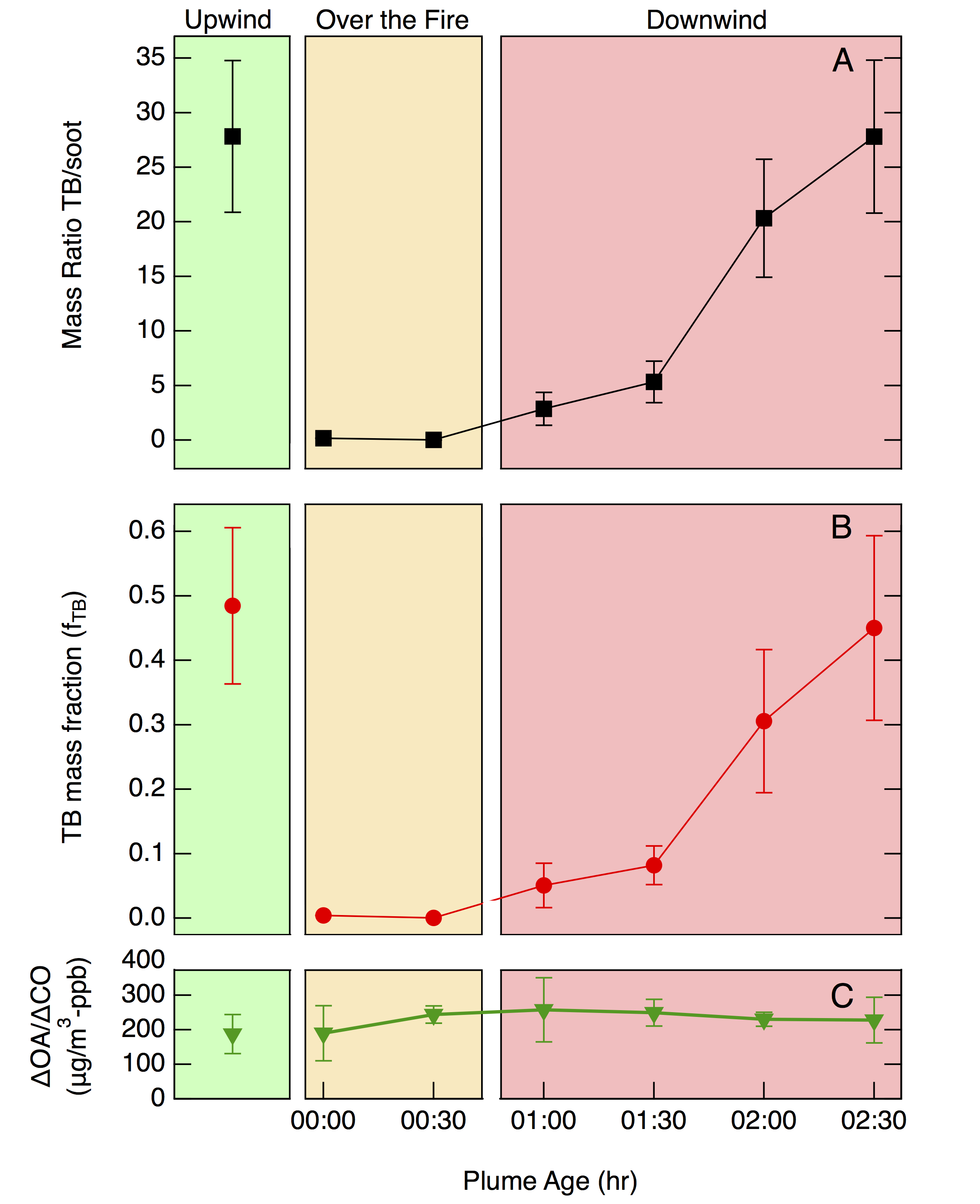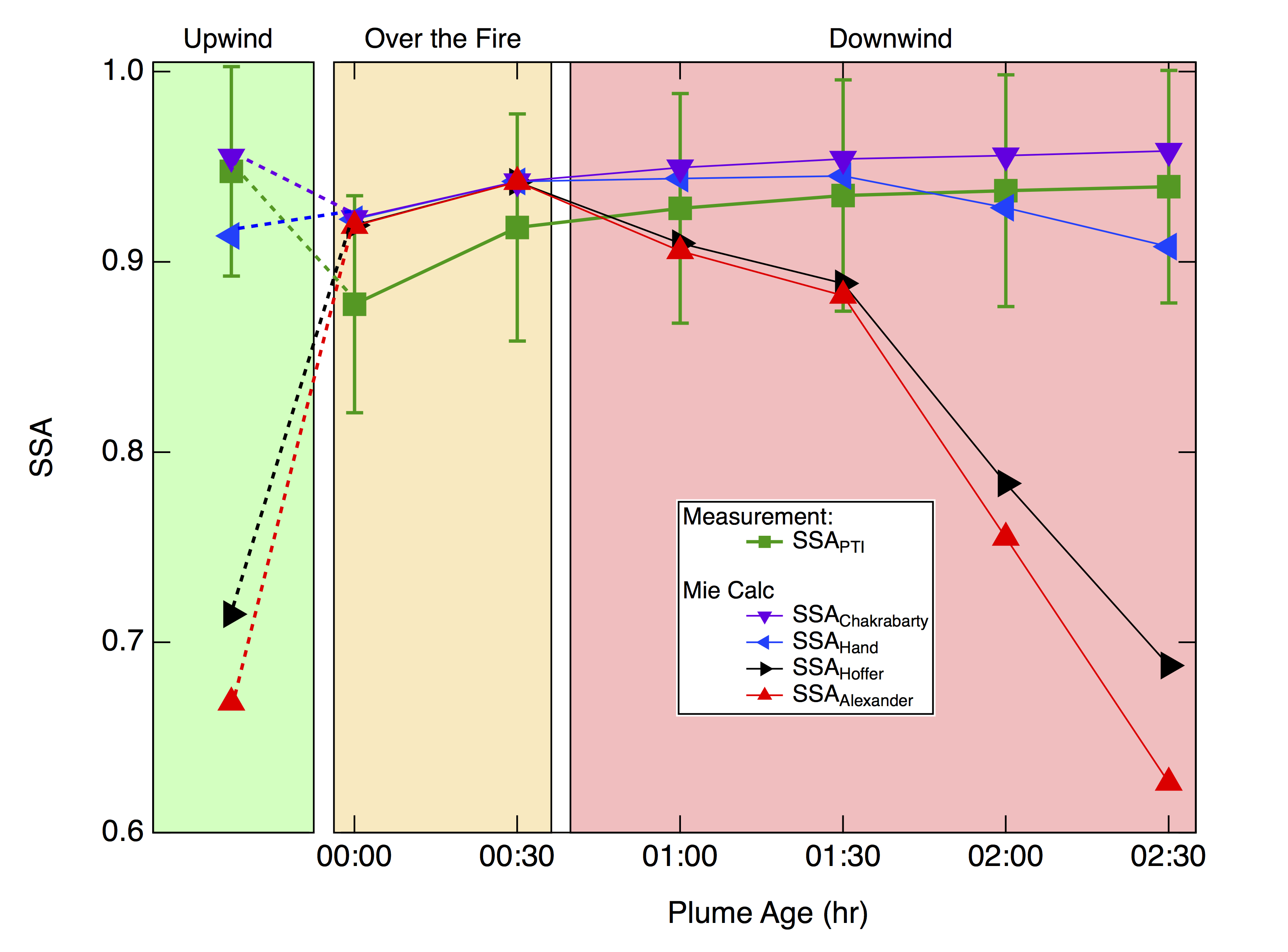Formation and evolution of tar balls from northwestern US wildfires
Submitter:
Sedlacek, Arthur J — Brookhaven National Laboratory
Kleinman, Larry — Brookhaven National Laboratory
Area of research:
Aerosol Processes
Journal Reference:
Science
Wildfires are major sources of organic and black carbon aerosol particles and tar balls -- a type of brown carbonaceous particle apparently unique to biomass burning -- are under-recognized constituents of wildfire emissions. To help quantify the contribution of biomass burning (BB) to aerosol radiative forcing, the U.S. Department of Energy’s Atmospheric Radiation Measurement (ARM) user facility carried out an aircraft-based field campaign (BBOP: Biomass Burning Observation Project) that targeted the near-field evolution (< 5 h) of BB aerosol particles. Here we focus on the production of atmospheric tar balls (TBs) from wildfires in the northwestern United States.
Impact
This work describes the first atmospheric observations of the formation and evolution of tar balls from forest fires. Tar ball mass fractions increased from < 1% near the fire to 31–45% downwind, with little change in TB diameter. Single-scattering albedo (SSA) determined from scattering and absorption measurements increased slightly with downwind distance. Mie calculations are consistent with weak light absorbance by TBs (i.e., m similar to the literature values 1.56−0.02i or 1.80−0.007i).
Summary
Aerosol particles were collected on transmission electron microscopy (TEM) grids during aircraft transects at various downwind distances from the Colockum Tarps wildland fire. By uniquely combining transmission electron microscopy (TEM) analysis with single-particle soot photometer (SP2) and aerosol mass spectrometer (AMS) data, we also found that in some plumes up to 31-45% of wildfire aerosol mass was accounted for by TBs.
Single-scattering albedo (SSA) determined from scattering and absorption measurements increased slightly with downwind distance. Based on aerosol mass loadings and SSA derived from BBOP measurements, Mie calculations are consistent with weak light absorbance by TBs (i.e., m similar to the literature values 1.56−0.02i or 1.80−0.007i) but not consistent with absorption one order of magnitude stronger observed in different settings. Given the observed evolution of TBs, it is recommended that these particles be labeled as processed primary particles, thereby distinguishing TB formation–evolution from secondary organic aerosols.
The BBOP campaign was the first time the TB mass fraction has been estimated. While it has been known that TBs are formed in fires around the globe and that the number concentration of TBs is often large, the mass contribution found from BBOP field measurements shows the need to accurately represent these light absorbing particles in aerosol and climate models.



